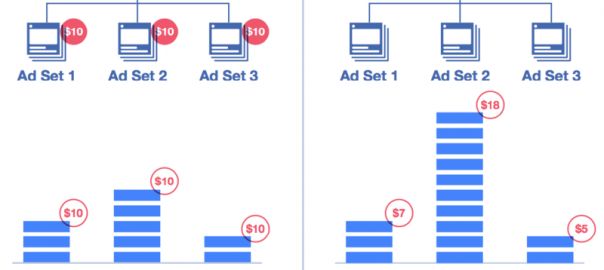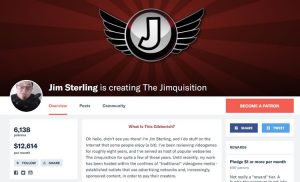— February 11, 2019
As every marketer knows, online advertising is in constant flux.

AdWords rebranded to Google Ads last summer.
With an ever-expanding suite of platforms for you to leverage, it makes sense that new features, ad formats, placements, and targeting functionalities are emerging (and vanishing) all the time.
And although that’s what makes online advertising exciting, it’s also what makes online advertising overwhelming. Keeping up with the news is legitimately time-consuming, and when your schedule is packed with everything from keyword research to landing page design, it can often feel as if you’re simply destined to fall behind.
Not on our watch, bub. Here’s a quick round-up of seven online advertising news stories—coming from the likes of Facebook and LinkedIn—that may have slipped past you in recent weeks.
YouTube Serves Text Ads in Search Results
During the final week of January, Marketing Land hosted SMX West—a search marketing conference where SEMs and SEOs converge for two days of networking and collaborating and what have you.
As you may expect, Google reps were in attendance. They announced that Google is incorporating YouTube into its Search partners network—a group of search engines and websites where you can run Google Search campaigns.
The idea behind the network is that it enables Search advertisers to expand the reach of their campaigns. If that aligns with your marketing goals, you can opt in.
Now that YouTube is a Search partner, advertisers who’ve opted into the network may have their text ads served to YouTube users. It’s important to note that—for now, at least—YouTube will only serve your text ads to mobile users.
According to Google, several months of testing indicate that YouTube Search ads perform comparably to Google Search ads in terms of CPA.
Quora Rolls Out Auction Insights and Keyword Targeting
Quora Ads is a fairly new platform—it just rolled out in the spring of 2016. As such, it’s a good idea to keep your eye on it for announcements and releases.
Exhibits A and B: auction insights and keyword targeting.
Let’s start with the former. Quora has announced three new metrics to help their advertisers get more complete ideas of how well they’re competing in the ad auction.
- Auctions Lost to Competition. Entering the Quora ad auction doesn’t guarantee that your ad will be shown to users. Auctions Lost to Competition reflects the rate at which you’re entering the auction and failing to win impressions. Quora says its algorithm factors in both creative relevance and maximum CPC bid.
- Impression Share. This reflects the rate at which you’re entering the auction and winning impressions. It’s analogous to a baseball team’s winning percentage.
- Absolute Impression Share. This reflects the rate at which you’re entering the auction and winning the top ad ranking.
Although basic, these three metrics provide highly actionable insights. Take Impression Share, for example. You know that Quora’s algorithm takes into account both creative relevance and maximum CPC bid. If you’re dissatisfied with your ads’ rankings but uncomfortable with placing higher bids, you know you have work to do on your ad copy.

Quora has also rolled out keyword targeting to its advertisers. With keyword targeting, you can serve your ads to users based on the terms they use to ask their questions.
With broad match targeting, you’ll serve your ads to close variants of your keywords. With phrase match targeting, you’ll serve them only when users search your keyword exactly. You can use negative keywords to prevent your ads from serving to particular questions.
Keyword targeting functionality ties back to the auction insights, of course. With the ability to add negatives, you can restrict the range of questions that trigger your ads and make sure you’re winning impressions only from Quora users to whom your ads are relevant.
Facebook Wants You to Advertise in Stories
At the end of last month, Facebook held its quarterly conference call to let investors know how everything’s going.
In a nutshell: pretty damn good from a revenue standpoint.
In Q4 of 2018, Facebook drove $ 16.6 billion in ad revenue—a 30% YoY increase. It’s crucial to note that 93% of that ad revenue came from mobile devices.
Zuck and company covered a ton of ground over the course of the conference call, so there’s no shortage of stuff to talk about. However, as I was combing through the transcript, one key takeaway jumped out at me.
Facebook wants you to advertise in Stories.
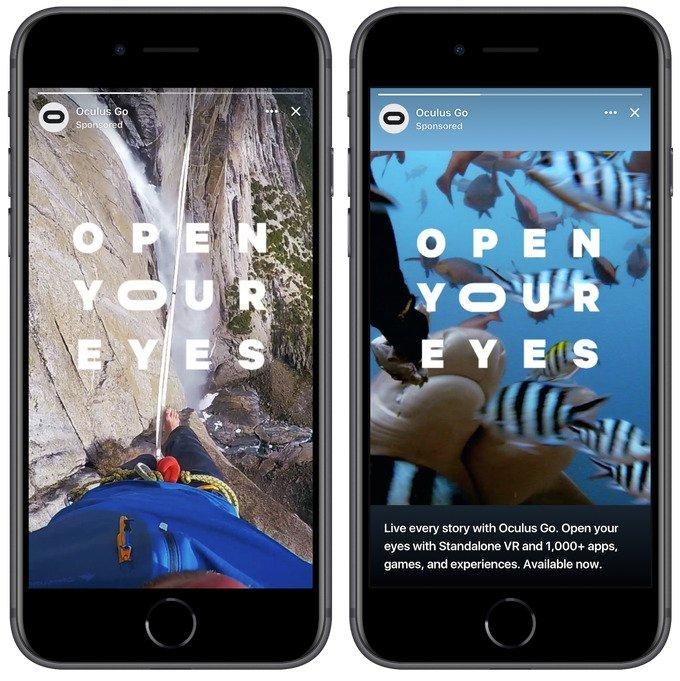
Don’t take my word for it. Let’s look at what CFO David Wehner had to say.
“When we look to 2019, we do expect a deceleration of revenue growth throughout the year. And while we have opportunities to grow impressions on Facebook and Instagram, that’s less so in Feed, where we already have healthy ad loads on both.”
On both Facebook and Instagram, users’ News Feeds are saturated with ads. Although we recommend Feed advertising, it comes with an important caveat: Standing out among your competitors isn’t easy.
Ostensibly, if Facebook and Instagram users are tiring of Feed ads, they’re becoming less inclined to click. That means less revenue for Facebook. Accordingly…
“Whereas in 2018 we benefited from strong impression growth on Instagram in both Feed and Stories, we’ll be more reliant on Stories impression growth in 2019. And from a pricing perspective, there’s—we’ve got to improve our ability to grow the number of advertisers using Stories and improve pricing there.”
You should expect your competitors to start leveraging Story ads on both Facebook and Instagram in 2019. As such, we recommend getting a jump on Story ads now while prices and competition are relatively low.
Instagram Users Are Here for Brand Content
Instagram users are selective about the accounts they follow. If your business uses Instagram to engage users with original content, earning followers is a fundamental challenge.
But, there’s good news: According to a recent Facebook report, 57% of Instagram users are using the platform more than they did a year ago. Plus, 44% say they expect to use Instagram even more in the ensuing year.
And best of all: 66% say Instagram is a good place to connect with brands.
So the majority of Instagram’s one billion active users are happy to engage with brand content. But what kinds of content are they looking for?
Here’s what users want from your videos:
- 14 seconds or shorter (36%)
- Between 15 and 29 seconds (32%)
- Between 30 and 60 seconds (24%)
No surprises there. Instagram users want brands to share videos, but only if they’re quick. As far as ads go, here’s what users prefer:
- Relatable ads (31%)
- News Feed ads (31%)
- Story ads (29%)
The demand for relatable ad content doesn’t surprise me. Some of the most popular brand accounts on Twitter are on the cutting edge of meme-based humor.
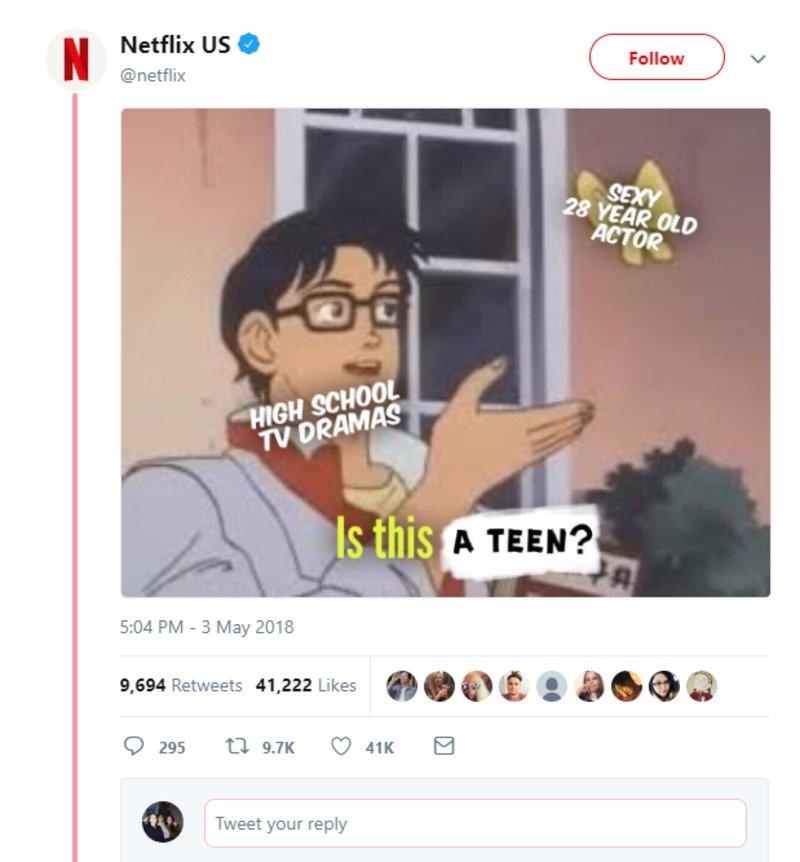
I wouldn’t read too much into the slight preference for Feed ads over Story ads. Stories are relatively new, so it’s to be expected that users are less accustomed to sponsored brand content.
We’ll wrap up with arguably the most surprising insight: A lot of Instagram users check the platform daily—including users in older age brackets. Check out these figures, which indicate the percentage of users within a given age bracket who use Instagram daily:

Via Facebook.
If we lump the last three brackets together and calculate the average, we find that 41% of Instagram users aged 35 and up check the platform at least once per day.
In other words: Don’t approach Instagram as if it’s a millennials-only club. If your target demo is middle-aged, Instagram is a great place to advertise!
LinkedIn Rolls Out Interest Targeting
LinkedIn has long boasted one key advantage over other social networks: their advertisers’ ability to precisely target prospects based on their job titles and professional industries.
As valuable as that is—especially for B2B marketers—a problem remains: LinkedIn users have professional interests outside of their current jobs. As such, there’s a huge opportunity for LinkedIn advertisers to target and engage users with the stuff they truly care about.
That’s why LinkedIn rolled out interest targeting in January. Now, you can create audiences of LinkedIn users based not only on their job titles, but also on the professional areas in which they’ve demonstrated active interest, too.
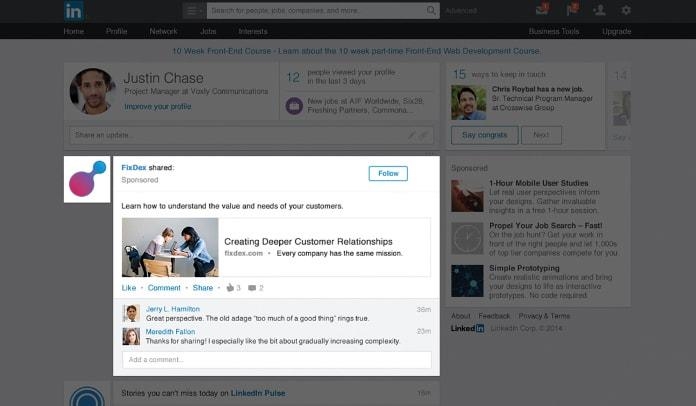
This rollout isn’t the only reason you should be paying attention to LinkedIn. In November of last year, Digiday surveyed 290 advertisers and found that 42% of them plan to increase their LinkedIn advertising budgets in 2019.
Many say they’ll scrape together the money required to buy (relatively) expensive LinkedIn ads by shifting their budgets away from social networks like Twitter.
Whereas Twitter gives you the power to reach tons of users and effectively build brand awareness, LinkedIn enables you to drive high numbers of quality leads.
Now more than ever, adding LinkedIn to your social media advertising repertoire is a wise move.
Facebook Will Merge Its Messaging Platforms
According to a New York Times report, Facebook has decided to connect Messenger, Instagram, and WhatsApp with a single communication infrastructure.
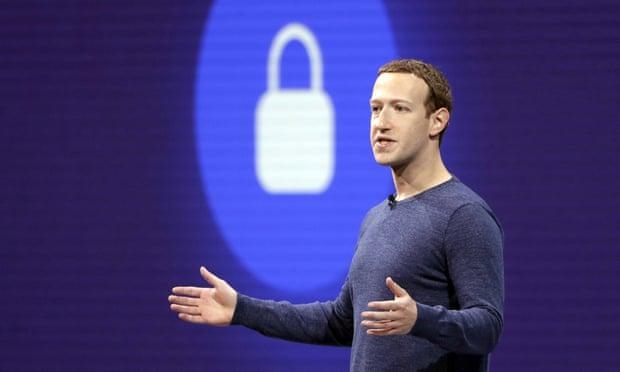
Via The Guardian.
Each of the platforms will retain its own stand-alone app. The difference will be users’ ability to message friends and family across the three platforms from a single place.
So, if you’re in the Messenger app and you want to send an Instagram DM (sup) to a friend, you’ll no longer need to switch apps.
Zuck says that the motivation to merge the three platforms comes from the drive to extend end-to-end encryption (currently enjoyed only by WhatsApp users) to everyone using Messenger and Instagram. End-to-end encryption (E2E) prevents anyone from stealing the contents of the messages you send.
Plus, it’s pretty convenient to use all three apps in one spot.
That goes for businesses as well as users. If you’re currently (or had planned on) leveraging Messenger chatbots to communicate with customers and prospects, it appears you’ll soon be able to do so on Instagram and WhatsApp, too.
In other words, the user base with whom you can automate communication is going to get a whole lot bigger.
Facebook Campaign Budget Optimization to Become Default
What’s that? You want YET ANOTHER update on Facebook? You want NOTHING but Facebook updates?
Chill.
Facebook has announced that—as of September of this year—you will not be allowed to opt out of campaign budget optimization. It doesn’t matter whether it’s a brand new campaign or one you’ve been managing for years.
(Facebook Ads campaign budget optimization is an automated solution by which you set a single campaign budget and allow Facebook to allocate your money across your ad sets. Facebook continuously tracks the performance of each ad set and changes your budget allocation accordingly.)
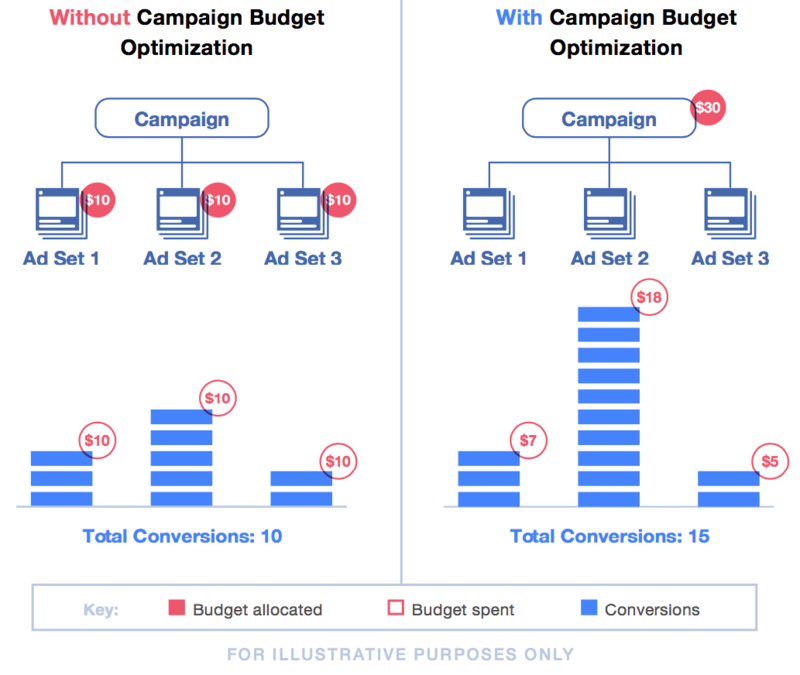
Via Facebook.
So, starting this fall, all account managers will be handing off some budgeting responsibilities to Facebook Ads itself.
Facebook outlines the following as the chief benefits of campaign budget optimization:
- Maximize campaign value by making real-time changes to budget allocation according to ad set performance.
- Stop spending time on manual budget shifts (and start spending more time on tasks you actually, you know, enjoy.)
- Efficiently spend your budget across audiences by allowing Facebook Ads to identify low-cost audience opportunities across your ad sets.
As Jon Loomer has pointed out, this is a pretty controversial decision.
As helpful as automation can be, advertisers are generally uncomfortable with their budgets being spent while they sleep. You may find that forfeiting control means your budget falls out of line with your long-term campaign goals. You’ll have to see what happens and, if necessary, get creative.
Digital & Social Articles on Business 2 Community
(86)
